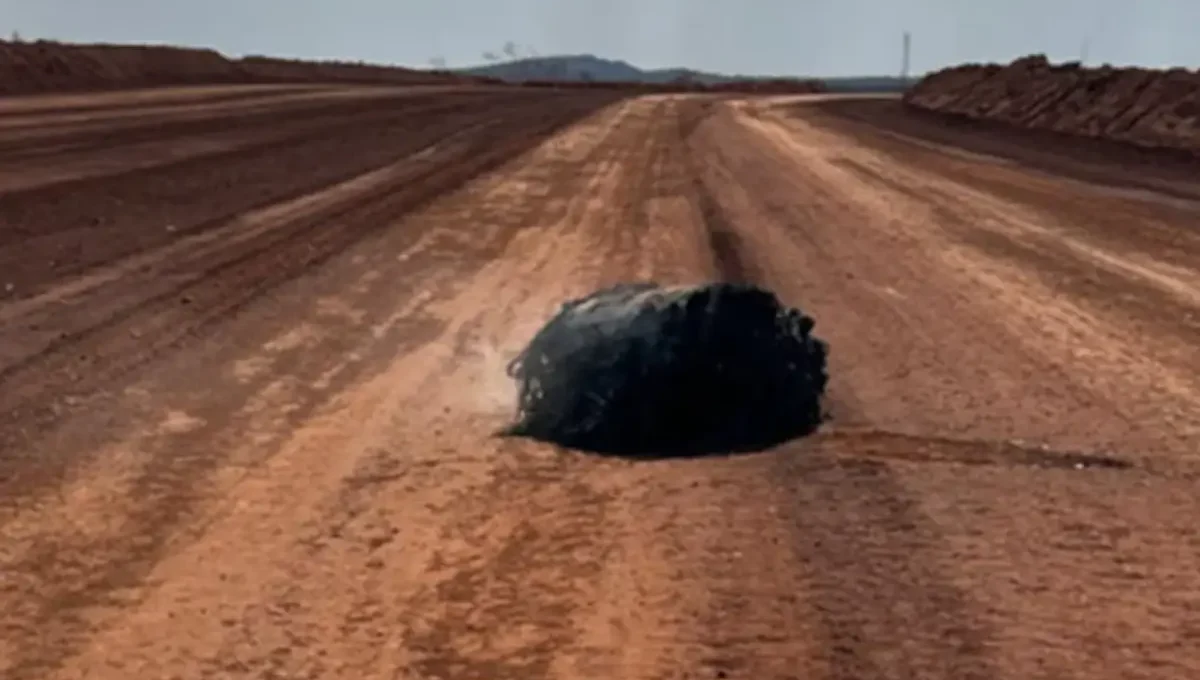| Summary |
|
A piece of suspected space debris from a recent Chinese rocket launch crash-landed near the mining town of Newman in Western Australia on October 18, 2025, sparking an investigation by local and federal authorities. The large cylindrical object, still smoking when discovered by miners, is believed to be part of a rocket’s upper stage that survived reentry before slamming into the desert landscape.
Police quickly sealed off the area after miners reported a metallic structure lying across a remote road, still radiating heat from its descent. The object, roughly the size of a large barrel, showed signs of intense thermal damage: charred carbon fiber, warped metal, and streaks of melted resin. No injuries were reported.
Early inspections by experts from the Australian Space Agency and the Australian Transport Safety Bureau confirmed the debris was not from an aircraft. Instead, it matched the characteristics of a composite over-wrapped pressure vessel (COPV), a type of high-pressure tank used to store gases or propellants on rockets. These tanks are built to withstand extreme vibration and temperature changes during launch and sometimes endure the heat of reentry without fully burning up.
Space archaeologist Alice Gorman identified the object as likely belonging to the upper stage of China’s Jielong 3 rocket (AKA Smart Dragon 3), which launched in late September 2025 carrying a batch of commercial satellites. Dutch satellite tracker Marco Langbroek independently confirmed the likelihood, noting that the object’s design and reentry path aligned with data from the Jielong 3 mission.
The Jielong 3, developed by China Rocket Co. under CASC, is part of Beijing’s expanding program to provide rapid, low-cost satellite deployment. However, as with many modern rockets, not all components disintegrate on reentry. Lightweight carbon fiber composites can survive the fiery descent, especially when shaped to resist aerodynamic heating.
During reentry, most spacecraft fragments vaporize from frictional heat exceeding 1,500 degrees Celsius. But carbon fiber COPVs are resilient; their reinforced layers protect the inner metal liner from melting. Analysts believe the object tumbled as it fell, preventing any single side from taking the full heat load, which may explain why it landed mostly intact.
Australia’s wide and sparsely populated interior has become a frequent landing site for uncontrolled reentries. In recent years, parts of SpaceX and Indian rocket stages have been found in rural areas or along western beaches. The country’s 3 million square miles of open terrain make it a likely target zone for falling debris.
NASA estimates that more than 36,000 objects larger than a softball currently orbit Earth, with millions of smaller fragments traveling at speeds of up to 28,000 kilometers per hour. Collisions between satellites and old rocket bodies increase this count each year, raising concerns about safety in orbit and the risk to populated areas during reentries.
European Space Agency director Josef Aschbacher, visiting Australia earlier this year, said that with global launch activity tripling over the past decade, the world must adopt stricter end-of-life measures for rockets. Many experts, including Gorman, argue for mandatory reentry planning, ensuring upper stages are either guided into the ocean or equipped with systems that help them burn up safely.
Western Australia Police are leading the current investigation, supported by the Australian Space Agency and local mining authorities. Teams are collecting samples for chemical and isotopic testing to trace the object’s manufacturing origin. Results are expected to confirm whether the debris indeed came from China’s Jielong 3 mission.
If verified, the incident could open diplomatic discussions about liability under the United Nations Outer Space Treaty, which holds launching states responsible for damage caused by their space objects. Similar cases in the past have prompted international calls for better space debris management.
For now, the scorched tank remains secured in a police storage facility in Newman. It stands as another reminder of how our growing presence in space occasionally leaves traces on Earth, sometimes falling back to remind us of the risks of orbiting above.

